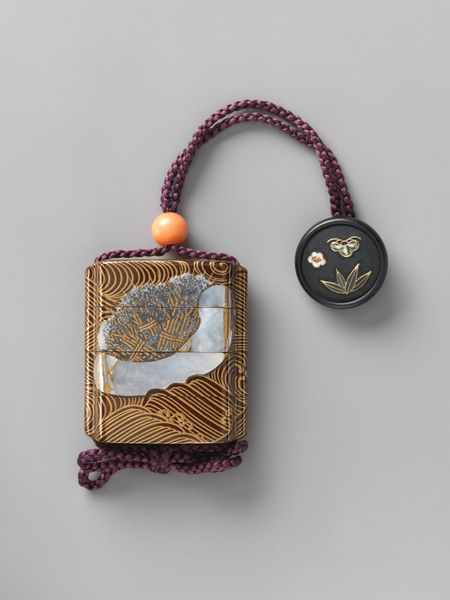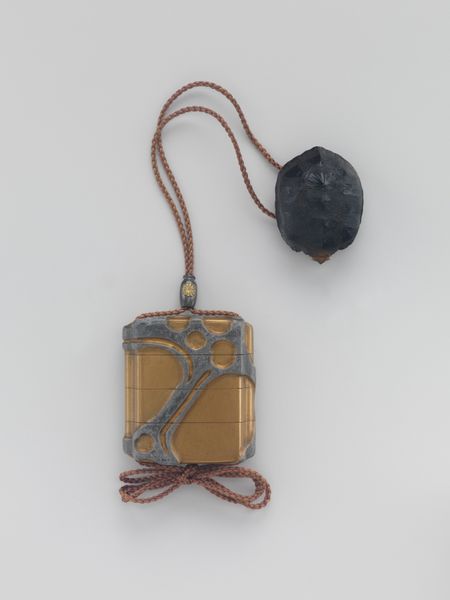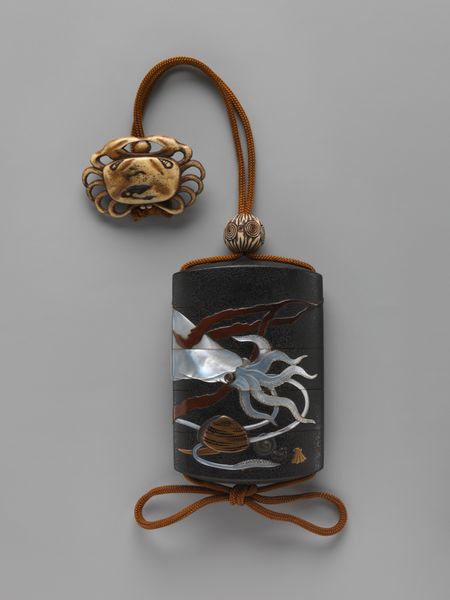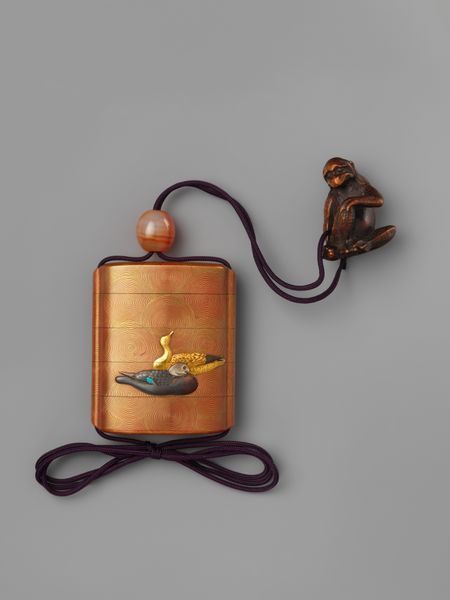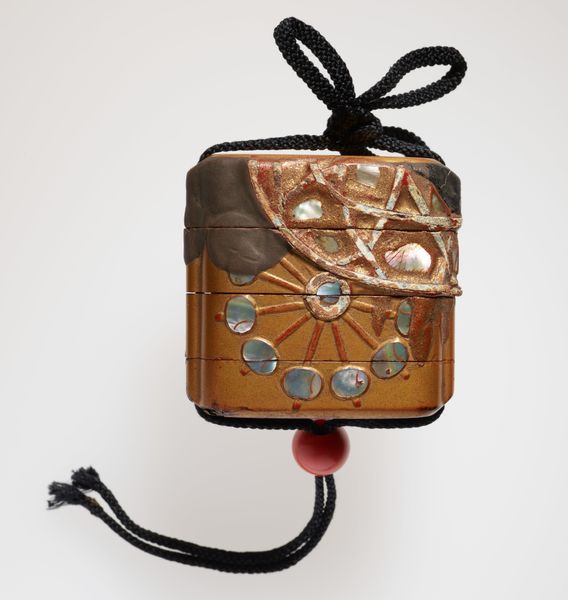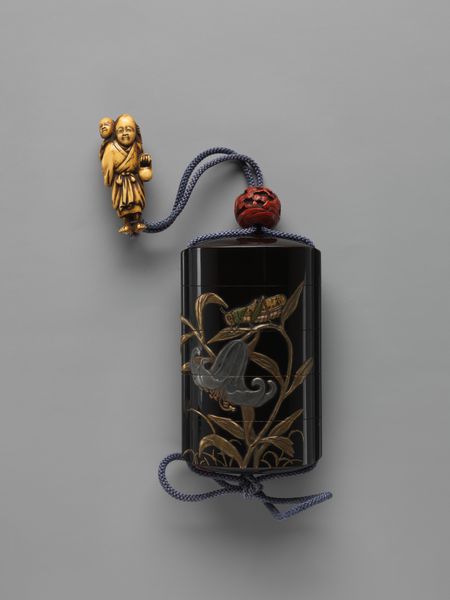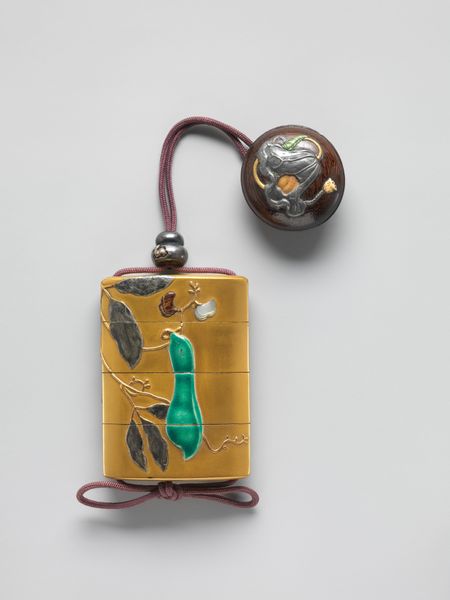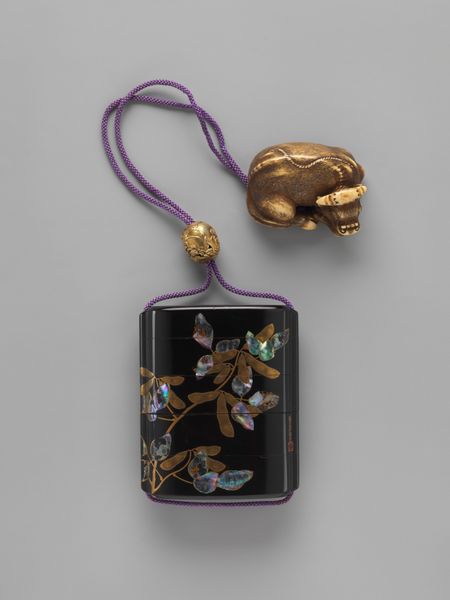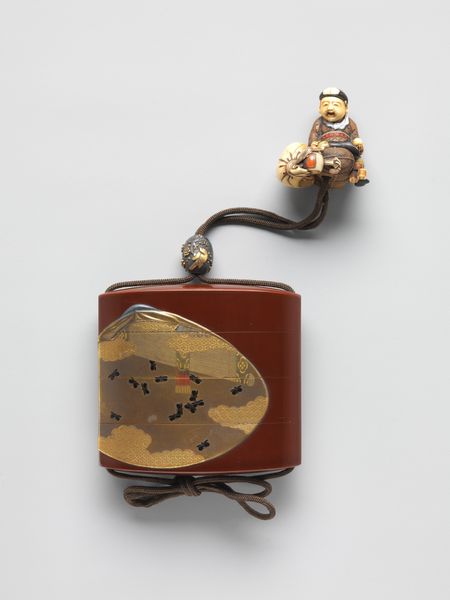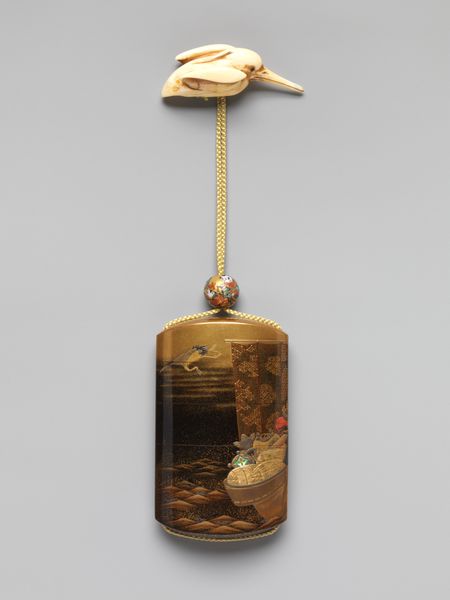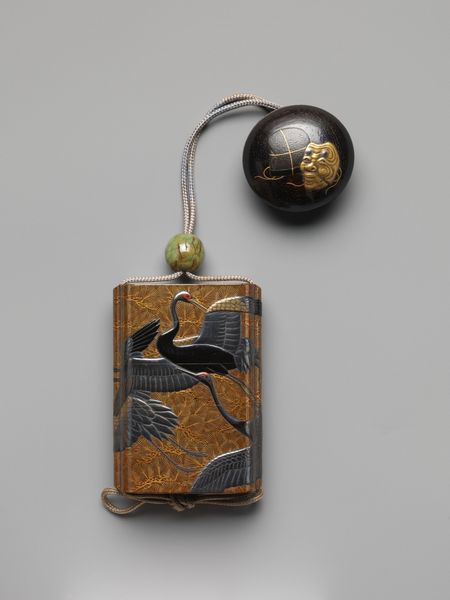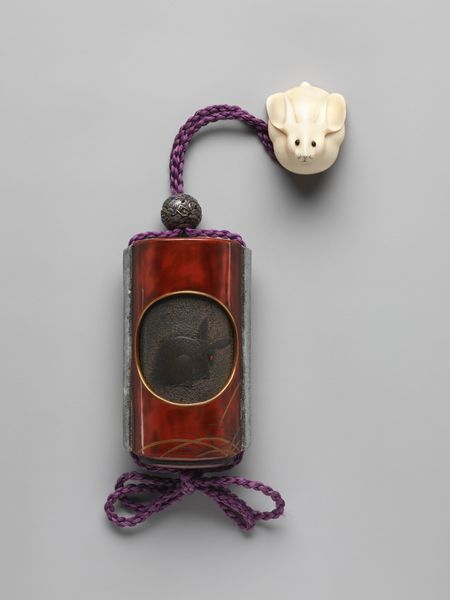
Inrō with Goose Flying across the Full Moon 19th century
0:00
0:00
mixed-media, painting, gold, ink
#
mixed-media
#
painting
#
asian-art
#
gold
#
landscape
#
japan
#
ink
#
miniature
Dimensions: Overall (inro): H. 3 1/16 in. (7.7 cm); W. 2 1/16 in. (5.2 cm); D. 13/16 in. (2 cm)
Copyright: Public Domain
This Inrō, a case for holding small objects, was made in Japan by Kano Seisen’in in the early 19th century. The scene of a goose flying across the full moon is rendered in gold lacquer. During this time, the Kano school of painting, to which Seisen’in belonged, was the official artistic style of the ruling Tokugawa shogunate. The Kano school served an important ideological function for the government. Kano artists produced paintings for castles and temples that promoted the shogun’s authority and reinforced traditional social values. The choice of imagery here is telling. Geese were a popular motif in Japanese art, symbolizing fidelity and marital bliss. The full moon, too, is rich in cultural associations, often linked to themes of enlightenment and tranquility. On the surface, the work seems conservative in its aesthetic sensibilities. However, we can consider whether the choice of imagery reinforces the existing social norms of the time. To understand better the context of this Inrō, look into the history of the Kano school and its relationship to the Tokugawa shogunate. Consider, also, the significance of the goose and the full moon in Japanese art and culture.
Comments
No comments
Be the first to comment and join the conversation on the ultimate creative platform.
